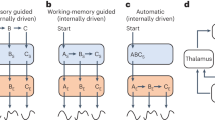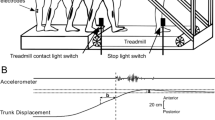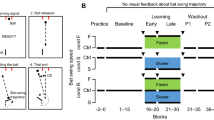Abstract
The neural mechanisms involved in motor timing are subcortical, involving mainly cerebellum and basal ganglia. However, the role played by these structures in predictive motor timing is not well understood. Unlike motor timing, which is often tested using rhythm production tasks, predictive motor timing requires visuo-motor coordination in anticipation of a future event, and it is evident in behaviors such as catching a ball or shooting a moving target. We examined the role of the cerebellum and striatum in predictive motor timing in a target interception task in healthy (n = 12) individuals and in subjects (n = 9) with spinocerebellar ataxia types 6 and 8. The performance of the healthy subjects was better than that of the spinocerebellar ataxia. Successful performance in both groups was associated with increased activity in the cerebellum (right dentate nucleus, left uvula (lobule V), and lobule VI), thalamus, and in several cortical areas. The superior performance in the controls was related to activation in thalamus, putamen (lentiform nucleus) and cerebellum (right dentate nucleus and culmen—lobule IV), which were not activated either in the spinocerebellar subjects or within a subgroup of controls who performed poorly. Both the cerebellum and the basal ganglia are necessary for the predictive motor timing. The degeneration of the cerebellum associated with spinocerebellar types 6 and 8 appears to lead to quantitative rather than qualitative deficits in temporal processing. The lack of any areas with greater activity in the spinocerebellar group than in controls suggests that limited functional reorganization occurs in this condition.




Similar content being viewed by others
References
Hore J, Watts S. Timing finger opening in over arm throwing based on a spatial representation of hand path. J Neurophysiol. 2005;93:3189–99.
Iacoboni M. Playing tennis with cerebellum. Nat Neurosci. 2001;4:555–6.
Harrington DL, Haaland KY. Neural underpinnings of temporal processing: a review of focal lesion, pharmacological, and functional imaging research. Rev Neurosci. 1999;10(2):91–116.
Holmes G. The cerebellum of man. Brain. 1939;62:1–30.
Gibbon J, Malapani C, Dale CL, Gallistel C. Toward the neurobiology of temporal cognition: advances and challenges. Curr Opin Neurobiol. 1997;7:170–84.
Matell MS, Meck WH. Cortico-striatal circuits and interval timing: coincidence detection of oscillatory processes. Brain Res Cogn Brain Res. 2004;21:139–70.
Mauk MD, Buonomano DV. The neural basis for temporal processing. Annu Rev Neurosci. 2004;27:307–40.
Ivry RB, Spencer RMC. The neural representation of time. Curr Opin Neurobiol. 2004;14:225–32.
Braitenberg V. Is the cerebellar cortex a biological clock in the millisecond range? Prog Brain Res. 1967;25:334–46.
Apps R, Garwicz M. Anatomical and physiological foundations of cerebellar information processing. Nat Neurosci. 2005;6:297–311.
Blakemore SJ, Sirigu A. Action prediction in the cerebellum and in the parietal lobe. Exp Brain Res. 2003;153:239–45.
Buhusi CV, Meck WH. What makes us tick? Functional and neural mechanisms of interval timing. Nat Rev Neurosci. 2005;6:755–65.
Ivry RB, Keele SW. Timing functions of the cerebellum. J Cogn Neurosci. 1989;1:136–52.
Jueptner M, Rijntjes M, Weiller C, Faiss JH, Timmann D, Mueller SP, et al. Localization of a cerebellar timing process using PET. Neurology. 1995;45:1540–5.
Meck WH. Neuropsychology of timing and time perception. Brain Cogn. 2005;58:1–8.
Pastor MA, Day BL, Macaluso E, Friston KJ, Frackowiak RSJ. The functional neuroanatomy of temporal discrimination. J Neurosci. 2004;24:2585–91.
Spencer RMC, Zelaznik HN, Diedrichsen J, Ivry RB. Disrupted timing of discontinuous but not continuous movements by cerebellar lesions. Science. 2003;300:1437–9.
Meck WH, Benson AM. Dissecting the brain's internal clock: how frontal–striatal circuitry keeps time and shifts attention. Brain Cogn. 2002;48(1):195–211.
Harrington DL, Haaland KY, Hermanowitz M. Temporal processing in the basal ganglia. Neuropsychology. 1998;12:3–12.
Malapani C, Rakitin B, Levy R, Meck WH, Deweer B, Dubois B, et al. Coupled temporal memories in Parkinson's disease: a dopamine-related dysfunction. J Cogn Neurosci. 1998;10:316–31.
O’Boyle DJ, Freeman JS, Cody FW. The accuracy and precision of timing of self-paced, repetitive movements in subjects with Parkinson's disease. Brain. 1996;119:51–70.
Harrington DL, Lee RR, Boyd LA, Rapcsak SZ, Knight RT. Does the representation of time depend on the cerebellum? Effect of cerebellar stroke. Brain. 2004;127:561–74.
Ferrandez AM, Huqueville L, Lehericy S, Poline JB, Marsault C, Pouthas V. Basal ganglia and supplementary motor area subtend duration perception: an fMRI study. Neuroimage. 2003;19(4):1532–44.
Livesey AC, Wall MB, Smith AT. Time perception: manipulation of task difficulty dissociates clock functions from other cognitive demands. Neuropsychologia. 2007;45:321–31.
Nenadic I, Gaser C, Volz HP, Rammsayer T, Häger F, Sauer H. Processing of temporal information and the basal ganglia: new evidence from fMRI. Exp Brain Res. 2003;148:238–46.
Jahanshahi M, Jones C, Dirnberger G, Frith C. The substantia nigra pars compacta and temporal processing. J Neurosci. 2006;26(47):12266–73.
Ivry RB. The representation of temporal information in perception and motor control. Cur Opin Neurobiol. 1996;6:851–7.
Lewis PA, Miall RC. A right hemispheric prefrontal system for cognitive time measurement. Behav Processes. 2006;71:226–34.
O’Reilly JX, Mesulam MM, Nobre AC. The cerebellum predicts the timing of perceptual events. J Neurosci. 2008;28(9):2252–60.
Leon MI, Shadlen MN. Representation of time by neurons in the posterior parietal cortex of the macaque. Neuron. 2003;38:8432–44.
Maschke M, Oehlert G, Xie TD, Perlman S, Subramony SH, Kumar N, et al. Clinical feature profile of spinocerebellar ataxia type 1–8 predicts genetically defined subtypes. Mov Disord. 2005;20:1405–12.
Bares M, Lungu O, Liu T, Waechter T, Gomez CM, Ashe J. Impaired predictive motor timing in patients with cerebellar disorders. Exp Brain Res. 2007;180(2):356–65.
Bares M, Lungu OV, Husarova I, Gescheidt T. Predictive motor timing performance dissociates between early diseases of the cerebellum and Parkinson's disease. Cerebellum. 2010;9(1):124–35.
Trouillas P, Takayanagi T, Hallett M, Currier RD, Subramony SH, Wessel K, et al. International cooperative ataxia rating scale for pharmacological assessment of the cerebellar syndrome. J Neurol Sci. 1997;145:205–11.
Oldfield RC. The assessment and analysis of handeness: the Edinburgh inventory. Neuropsychologia. 1971;9:97–113.
Montgomery SA, Asberg M. A new depression scale designed to be sensitive to change. Br J Psychiatr. 1979;134:382–9.
Talairach J, Tournoux P. Co-planar stereotactic atlas of the human brain. Stuttgart: Georg Thieme Verlag; 1988.
Penny W, Holmes A. Random-effects analysis. In: Frackowiak RSJ, Friston KJ, Frith CD, Dolan RJ, Friston KJ, Price CJ, Zeki S, Ashburner J, Penny W, editors. Human brain function, chap 42. 2nd ed. London: Academic; 2003. p. 843–50.
Miall RC, Weir DJ, Wolpert DM, Stein JF. Is the cerebellum a smith predictor? J Mot Behav. 1993;25:203–16.
Bastian AJ. Learning to predict future: the cerebellum adapts feed-forward movement control. Curr Opin Neurobiol. 2006;16:645–9.
Nixon PD. Predicting sensory events. The role of the cerebellum in motor learning. Exp Brain Res. 2001;138:251–7.
Nowak DA, Topka H, Timmann D, Boecker H, Hermsdörfer J. The role of the cerebellum for predictive control of grasping. Cerebellum. 2007;6:7–17.
Nowak DA, Hufnagel A, Ameli M, Timmann D, Hermsdörfer J. Interhemispheric transfer of predictive force control during grasping in cerebellar disorders. Cerebellum. 2009;8(2):108–15.
Bo J, Block HJ, Clark JE, Bastian AJ. A cerebellar deficit in sensorimotor prediction explains movement timing variability. J Neurophysiol. 2008;100(5):2825–32.
Wolpert DM, Miall RC, Kawato M. Internal models in the cerebellum. Trends Cogn Sci. 1998;2:338–47.
Lewis PA, Miall RC. Brain activation patterns during measurement of sub- and supra-second intervals. Neuropsychologia. 2003;41(12):1583–92.
Xu D, Liu T, Ashe J, Bushara KO. Role of the olivo-cerebellar system in timing. J Neurosci. 2006;26:5990–5.
Mathiak K, Hertrich I, Grodd W, Ackermann H. Cerebellum and speech perception: a functional magnetic resonance imaging study. J Cogn Neurosci. 2002;14(6):902–12.
Perrett SP, Ruiz BP, Mauk MD. Cerebellar cortex lesions disrupt learning-dependent timing of conditioned eyelid responses. J Neurosci. 1993;13:1708–18.
Gerwig M, Hajjar K, Dimitrova A, Maschke M, Kolb FP, Frings M, et al. Timing of conditioned eyeblink responses is impaired in cerebellar patients. J Neurosci. 2005;25:3919–31.
Timmann D, Watts S, Hore J. Failure of cerebellar patients to time finger opening precisely causes ball high–low inaccuracy in overarm throws. J Neurophysiol. 1999;82(1):103–14.
Ullen F, Forssberg H, Erhsson HH. Neural networks for the coordination of the hands in time. J Neurophysiol. 2003;89(2):1126–35.
Rao SM, Harrington DL, Haaland KY, Bobholz JA, Cox RW, Binder JR. Distributed neural systems underlying the timing of movements. J Neurosci. 1997;17(14):5528–35.
Edelstyn NM, Ellis SJ, Jenkinson P, Sawyer A. Contribution of the left dorsomedial thalamus to recognition memory: a neuropsychological case study. Neurocase. 2002;8(6):442–52.
Lewis PA, Miall RC. Distinct systems for automatic and cognitively controlled time measurement: evidence from neuroimaging. Curr Opin Neurobiol. 2003;13:250–5.
Manto MU. On the cerebello-cerebral interactions. Cerebellum. 2007;5(4):286–8.
Daly JJ, Wolpaw JR. Brain–computer interfaces in neurological rehabilitation. Lancet Neurol. 2008;7(11):1032–43.
Grant MP, Leigh RJ, Seidman SH, Riley DE, Hanna JP. Comparison of predictable smooth ocular and combined eye-head tracking behaviour in patients with lesions affecting the brainstem and cerebellum. Brain. 1992;115:1323–42.
Townsend J, Courchesne E, Covington J, Westerfield M, Harris NS, Lyden P, et al. Spatial attention deficits in patients with acquired or developmental cerebellar abnormality. J Neurosci. 1999;19:5632–43.
Lilja A, Hamalainen P, Kaitaranta E, Rinne R. Cognitive impairment in spinocerebellar ataxia type 8. J Neurol Sci. 2005;237(1–2):31–8.
Kawai Y, Suenaga M, Watanabe H, Ito M, Kato K, Kato T, et al. Prefrontal hypoperfusion and cognitive dysfunction correlates in spinocerebellar ataxia type 6. J Neurol Sci. 2008;271(1–2):68–74.
Suenaga M, Kawai Y, Watanabe H, Atsuta N, Ito M, Tanaka F, et al. Cognitive impairment in spinocerebellar ataxia type 6. J Neurol Neurosurg Psychiatry. 2008;79(5):496–9.
Garrard P, Martin NH, Giunti P, Cipolotti L. Cognitive and social cognitive functioning in spinocerebellar ataxia—a preliminary characterization. J Neurol. 2008;255(3):398–405.
Werner S, Bock O, et al. The effect of cerebellar cortical degeneration on adaptive plasticity and movement control. Exp Brain Res. 2009;193(2):189–96.
Huang C. Implications on cerebellar function from information coding. Cerebellum. 2008;7(3):314–31.
Acknowledgements
Supported by NIH grant NS40106, MH065598, the Department of Veterans Affairs, the Brain Sciences Chair, Proshek-Fulbright grant, Academia Medica Pragensis Foundation, and by MSM0021622404.
Conflict of Interest
There are no potential conflicts of interest in the submission and no financial and personal relationship that might bias our work.
Author information
Authors and Affiliations
Corresponding author
Rights and permissions
About this article
Cite this article
Bares, M., Lungu, O.V., Liu, T. et al. The Neural Substrate of Predictive Motor Timing in Spinocerebellar Ataxia. Cerebellum 10, 233–244 (2011). https://doi.org/10.1007/s12311-010-0237-y
Published:
Issue Date:
DOI: https://doi.org/10.1007/s12311-010-0237-y




